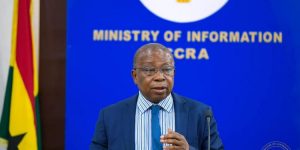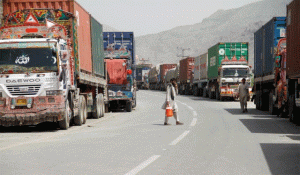A paradigm shift, estimated to bring about a ‘paradise-shift’ towards the northern part of Ghana, is underway in the Upper East region as the Volta River Authority (VRA) begins to prepare the ground for the construction of the Pwalugu Multipurpose Dam Project in the Talensi District.
The dam project, sited on Ghana’s White Volta River near the Pwalugu Bridge on the Tamale-Bolgatanga Highway, is designed to generate an extra 60 megawatts in addition to an existing 2 megawatts produced by a solar panel installation at Navrongo in the region.
It also comes with a twenty-thousand-hectare irrigation scheme— the country’s biggest bulk so far, according to energy experts— which will boost annual rice production by up to “117,000 tons” and maize by up to “49,000 ton” in Ghana. Included in the anticipated production boost are other crops like tomatoes, sweet potato, sweet pepper, onion and watermelon.
And, above all, the project will bring down the curtain on the untold devastation which the familiar northern floods, usually triggered by heavy downpours and perennially compounded by the ritual spillage of Burkina Faso’s Bagre Dam, have, for decades, wreaked on people and property.

Upper East Regional Minister, Paulina Patience Abayage, urges MDCEs to be ambassadors of the project
Aside the thousands of jobs up for grabs for those who will be casually engaged to build ‘the promised paradise’, the project, according to the Project Engineer, Kwaku Wiafe, will also have a “solar component” to balance hydro energy with solar power “to enhance reliability of supply”.
Speaking Monday at a consultative news conference in the Upper East regional capital, the Upper East Regional Minister, Paulina Patience Abayage, branded the project “a game changer”. And welcoming stakeholders to that conference, the Upper East Regional Coordinating Director, Alhaji Mahamadu Asibi Azonko, stressed the need to match the multimillion-dollar project with the sustainability it deserved.
The construction of the dam, funded with a loan from China, is scheduled to start by the close of 2019 and will take about three and a half years to complete. The building of the hydropower component alone, which is the first phase of the project, will cost an estimated 300 million U.S dollars as per the VRA’s feasibility study.
“VRA has engaged a team of international consultants to complement its extensive experience in the management of hydropower dams to ensure the contractors build and implement the project to the highest engineering standards. The scheme will boost economic activity in the Upper East and North East regions,” the Project Engineer announced assertively.
Pwalugu Resettlement Project will be Different— VRA Boss
A number of energy experts, irrigation management authorities as well Municipal and District Chief Executives (MDCEs) were in attendance for the media briefing.
Addressing the press, the Chief Executive of the VRA, Emmanuel Antwi-Darkwa, recounted some resettlement-related challenges encountered when his outfit took up the construction of some major dams in the country. The relocation procedure with the Pwalugu Multipurpose Dam Project, he affirmed, would be different.
“When we did Akosombo, we resettled 80,000 people. Today, we still have difficulties with the resettlement project. People have come after 57 years; they claim they haven’t seen the benefits of the project. We built another dam, Kpong. We resettled 7,000 people. It was more successful than the Akosombo one. We built on the difficulties of Akosombo. Seven thousand— very small compared to eighty thousand— but we still have difficulties today. Not too long ago, I think 2013, 2014, Bui was constructed. We resettled 2,000 people— only 2,000. So, progressively, the number is going down. But still there are residual issues.
“We want to do something different this time. We want to have a resettlement project that is fit for purpose. We want a resettlement project that people can embrace. A resettlement project that anybody who comes from outside would say, ‘No, this project was well [executed]’. So, please, we need your help to get this thing done. Of course, not everyone will be happy. This project is not going to take long to develop. It’s not like the Akosombo. A couple of years, it will be over,” stated the Chief Executive.
Continuing, he stressed: “It is Sinohydro that will construct the project and, of course, it’s a Chinese Government loan. I don’t have any doubt. That’s why the Project Development Committee is housed in the Vice President’s office. It’s deliberate. We’ve got all the assurances from government that funding is in place. The decision has been made. The funding, to all intents and purposes, has been secured. When you have a source of power close to you, you’ll be able to have the power more reliable. Electricity supply becomes more reliable. Factories are set up and people can go about their businesses very well because electricity is reliable.”
Be Ambassadors of the Project—Regional Minister to MDCEs
The presence of the MDCEs at the news conference was key, considering the far-reaching impact the dam project is projected to make on the masses and the groundwork role which they, as local government authorities, are expected to play in ensuring that the implementation is a smooth success.
That explains why the VRA boss emphasised: “This project is about the people. It’s not about us, Volta River Authority. This project is unique in several ways. It cuts across several ethnic areas, across kingdoms, chiefdoms. This project should change the lives of everyone here, women especially.”
And it explains why the Regional Minister, in delivering her closing comments at the event, tasked the MDCEs to help ‘clear the path’ to make the ‘dream paradise’ a lasting reality.
“I am also very excited about the local content. As indicated, this is a game changer. It is going to economically empower our people through the construction to after the construction, the impact and the effects it’s going to have on us, that’s the part that excites me very well as a Regional Minister. Let’s all take this as our own project. It is the super project of the Upper East region. Let us all be on board.
“The chief executives of the various assemblies, you are going back as ambassadors of this project. We’ll be coming to your communities; we’ll be meeting with the chiefs; we’ll be meeting with the traditional authorities; we’ll be meeting with those who’ll be affected by the resettlement. You are going to do those jobs for us. So, be on your guard and start working towards that,” she remarked.
Source: Starrfm.com.gh







